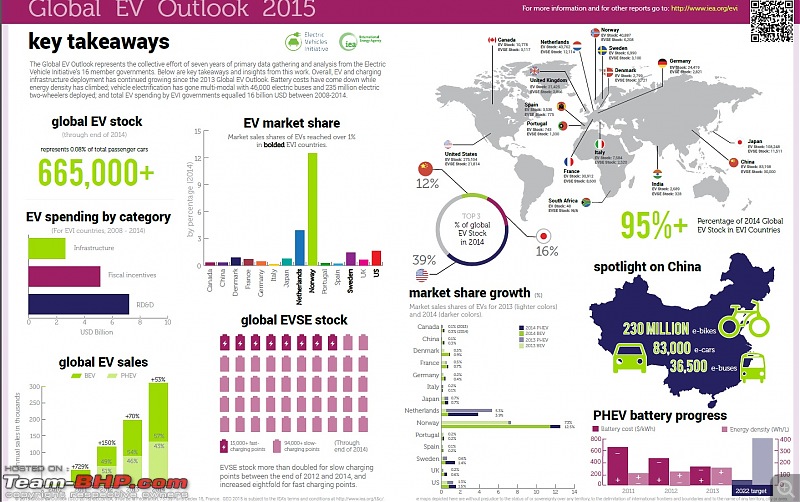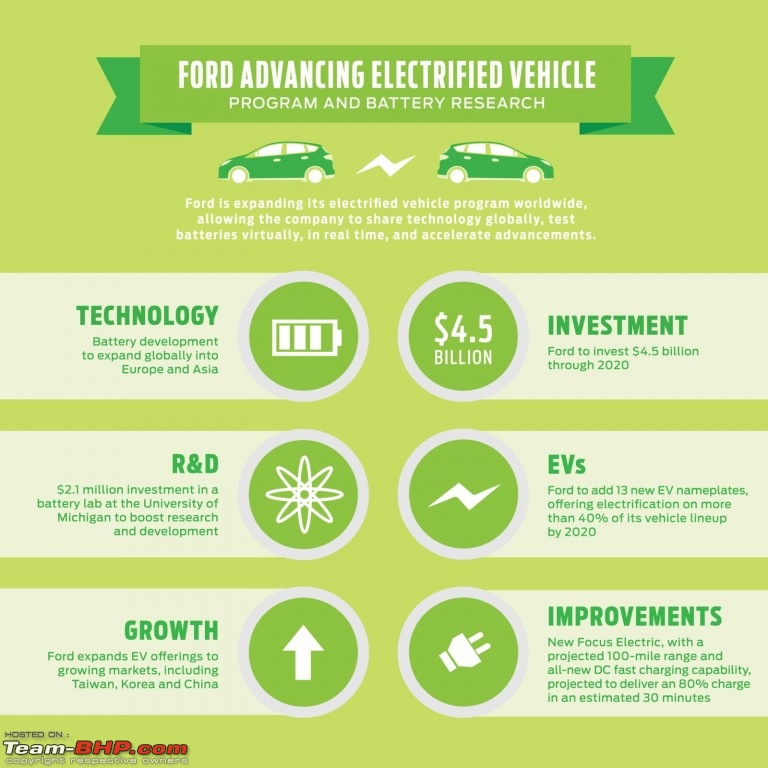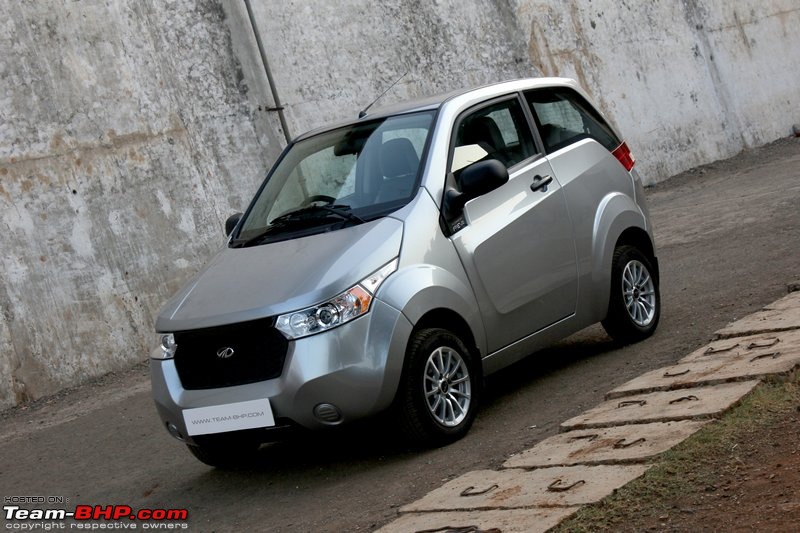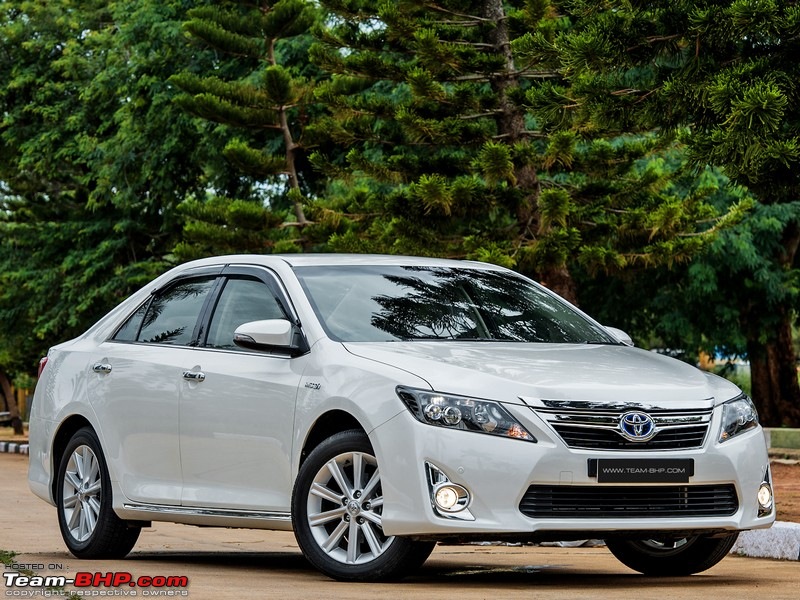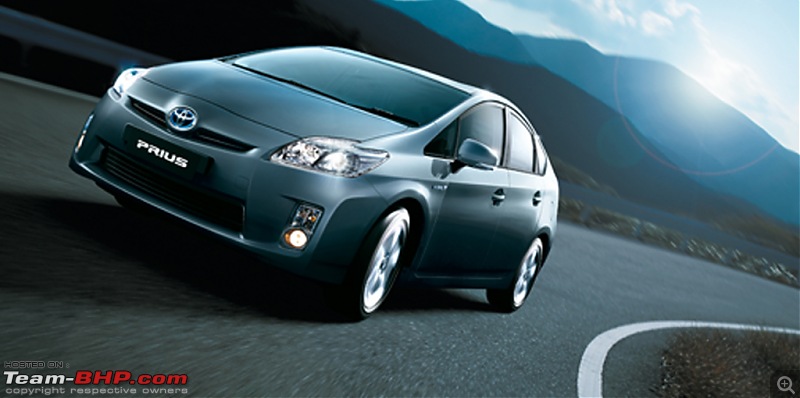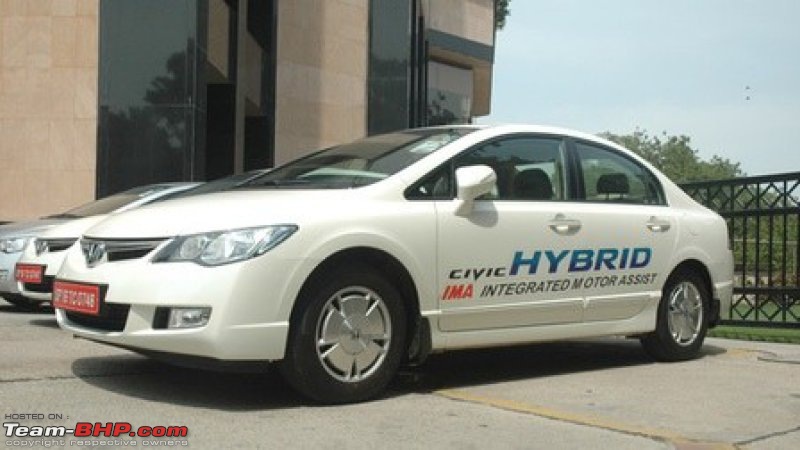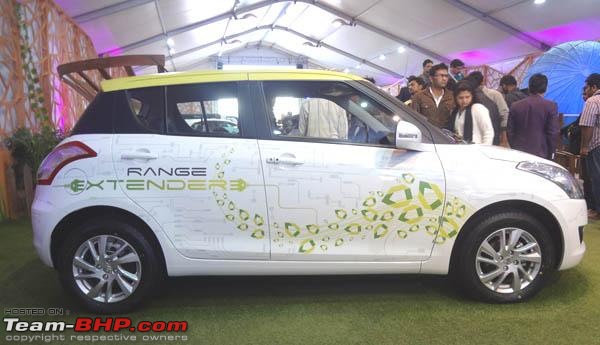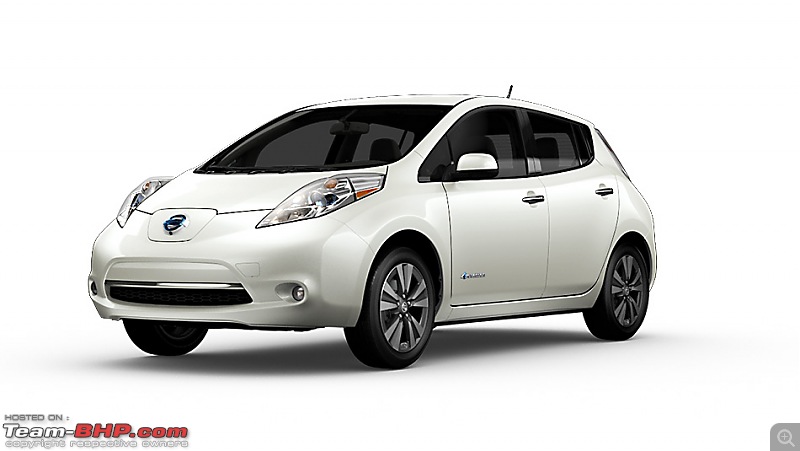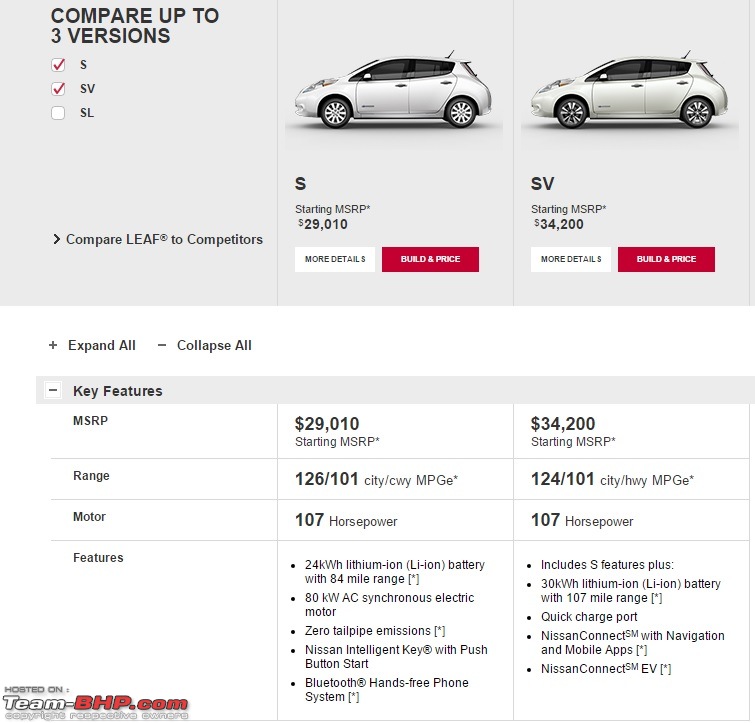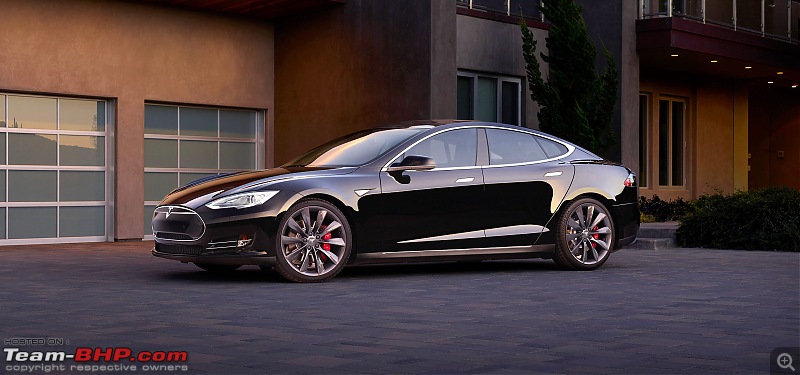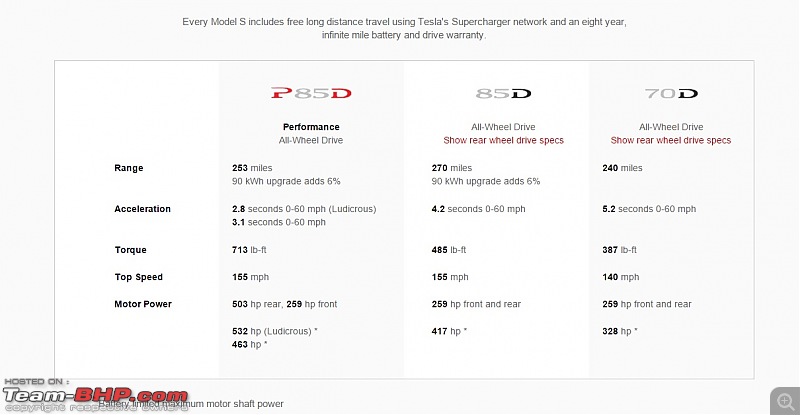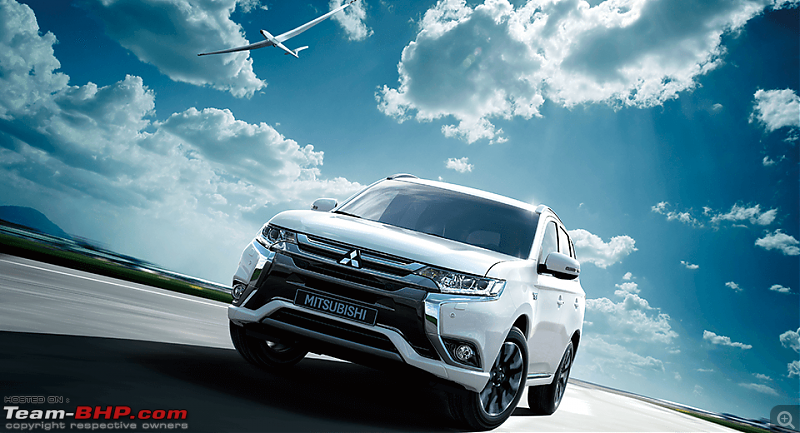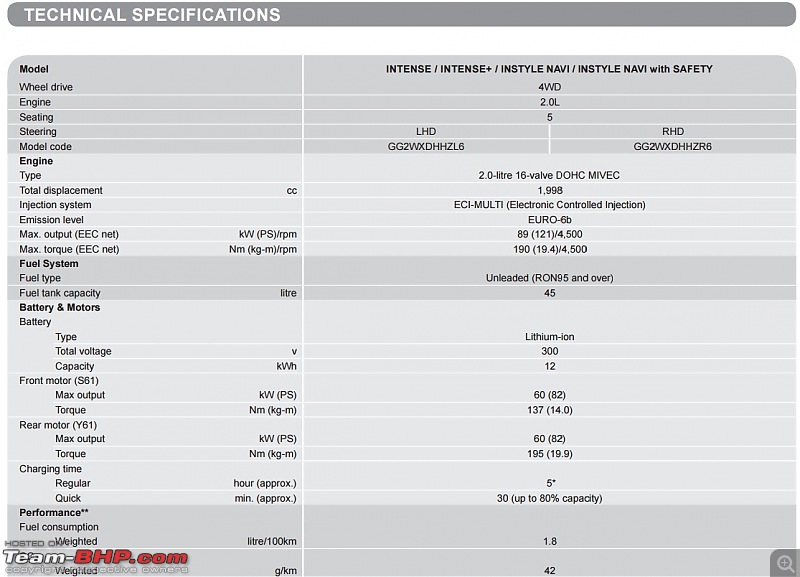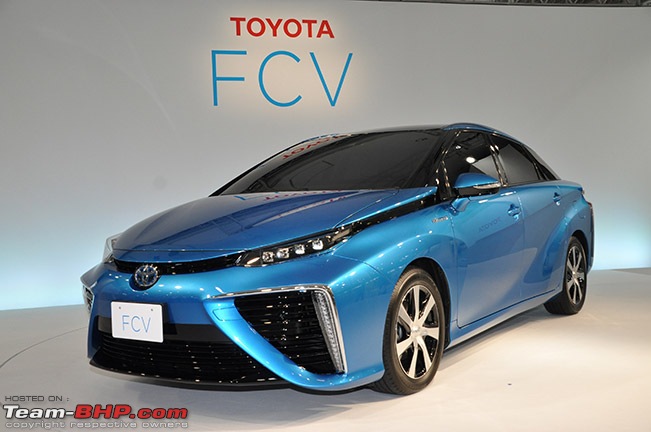| |||||||
 |
| Search this Thread |  614,767 views |
| | #1 |
| Distinguished - BHPian  Join Date: Aug 2011 Location: Bangalore
Posts: 4,722
Thanked: 18,393 Times
| The Electric Vehicle (EV) Landscape - A Deep Dive The Automobile Industry is growing rapidly worldwide. But with this growth has come the increased focus on pollution and its ill effects. China is battling record levels of Smog. Delhi has been called a 'Gas Chamber' by the High Court, which in turn has prompted the government to implement the controversial odd-even rule. The Supreme Court in India has banned sales of diesel vehicles with capacity >2000 cc in the NCR Region. It is also proposing a green cess on smaller diesels. All this has resulted in an increased focus on alternative energy sources to drive our vehicles. While in countries like US and China, this focus has been there for a few years now, with the recent happenings in India, this is on the way to becoming a focus here also. As we know one of the most common and successful alternate source of energy is electricity. Apart from electricity, CNG based vehicles have also seen moderate success. Here we shall focus on electric vehicles and drill down into the Electric Vehicle Landscape- Some things looked at here.
What are the types of Electric Vehicles?
A simple pictorial summary of above (Image Source) 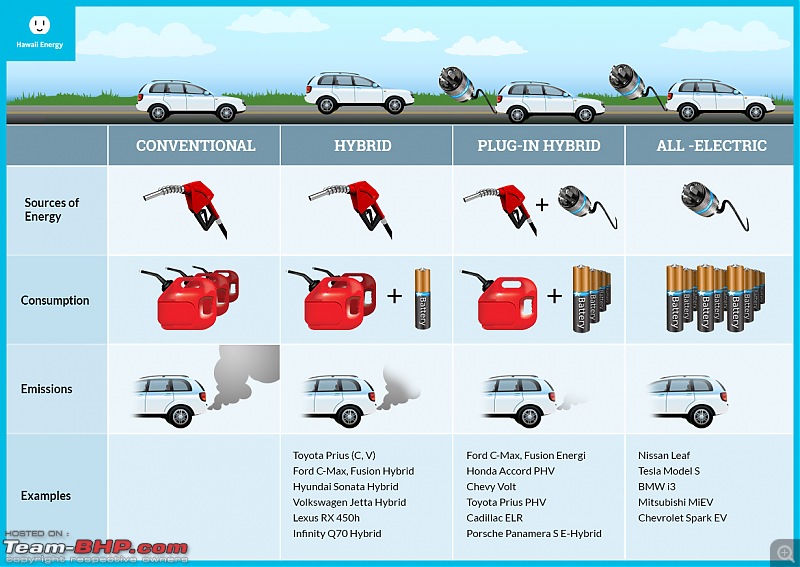 History of Electric Vehicles. ( Please open the image to make it more readable) 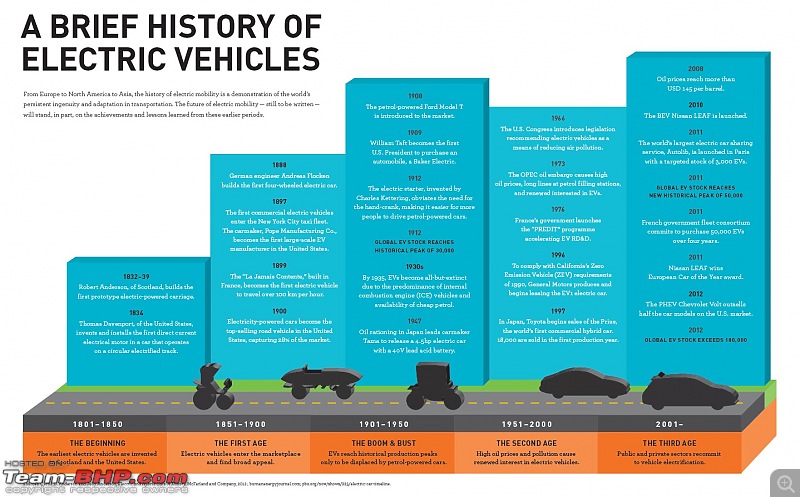
This article also has a very nice interactive timeline showing the history of the Electric Car Sources: Alternate Fuels Data Center Last edited by Rajeevraj : 18th December 2015 at 06:15. |
| |  (35)
Thanks (35)
Thanks
 |
| The following 35 BHPians Thank Rajeevraj for this useful post: | arsenal.arun, AutoInt, blackwasp, Carpainter, drhoneycake, driverace, EDDY21.05, FreeZaX, Gannu_1, GTO, hemanth.anand, Insearch, jailbird_fynix, knightrider_7, KomS_CarLog, KreativeGeek, LonelyPlanet, maximus., Mohan Mathew A, mooza, mulls, navin, NitinBatra, procrj, R2D2, rav11stars, rdhawan15, samaspire, sourav9385, sri_tesla, theexperthand, V.Narayan, vb-saan, yogishkamath, zosoin |
| |
| | #2 |
| Distinguished - BHPian  Join Date: Aug 2011 Location: Bangalore
Posts: 4,722
Thanked: 18,393 Times
| re: The Electric Vehicle (EV) Landscape - A Deep Dive The Electric Vehicle Initiative:
Key Observations
Sources: EVI Official Site Last edited by Rajeevraj : 17th December 2015 at 20:36. |
| |  (18)
Thanks (18)
Thanks
 |
| The following 18 BHPians Thank Rajeevraj for this useful post: | ampere, AutoInt, chakri400, drhoneycake, Gannu_1, GTO, hemanth.anand, knightrider_7, mooza, mulls, navin, R2D2, RoadSurfer, sourav9385, SS-Traveller, theexperthand, V.Narayan, vb-saan |
| | #3 | |||
| Distinguished - BHPian  Join Date: Aug 2011 Location: Bangalore
Posts: 4,722
Thanked: 18,393 Times
| re: The Electric Vehicle (EV) Landscape - A Deep Dive Country/Government and Manufacturer Initiatives: The governments of countries where the sales are huge have started to realize that pollution is a serious concern and needs to be looked at. Several incentives and subsidies have been launched to promote EVs. In addition, emission norms and regulations have been made stricter. This in turn have prompted manufacturers to invest heavily in EV Research. Below table shows a sample of the normal registration process and benefits to EV's for the key EV markets. This data is from a 2013 paper. 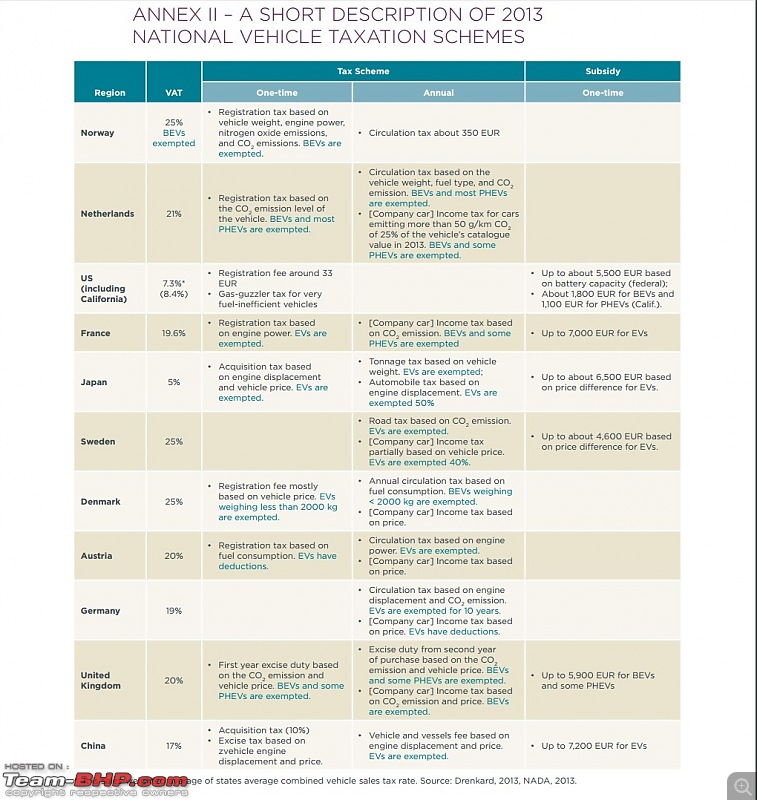 Notes:
Manufacturer Focus. In the last year, several manufacturers have launched dedicated initiatives to grow/expand the EV Portfolio. A quick look . Ford: Ford very recently launched a Vision 2020 EV Plan. Summarized well in the chart below. Volkswagen: VW after being hit by thee emission scandal, has been talking about focusing more on the EV Space. An extract from their most recent plans for CES 2016 Quote:
Quote:
Quote:
Sources Last edited by Rajeevraj : 18th December 2015 at 08:55. | |||
| |  (17)
Thanks (17)
Thanks
 |
| The following 17 BHPians Thank Rajeevraj for this useful post: | AutoInt, Carpainter, drhoneycake, famousshoes, Gannu_1, Grace, GTO, hemanth.anand, knightrider_7, mulls, navin, NitinBatra, R2D2, RoadSurfer, sourav9385, theexperthand, vb-saan |
| | #4 |
| Distinguished - BHPian  Join Date: Aug 2011 Location: Bangalore
Posts: 4,722
Thanked: 18,393 Times
| re: The Electric Vehicle (EV) Landscape - A Deep Dive India and EV's India is a developing, cost conscious market where the automobile sales itself is slowly ramping up. Hence, unlike other matured markets, India has a long way to go before EV's can make any kind of impact. Having said that, along with the rest of the world, there is a big focus on Electric Vehicles in India. Government Initiatives and Incentives: The government recently launched hte FAME India - Faster Adoption and Manufacturing of Hybrid and Electric vehicles in India - is a part of the National Electric Mobility Mission Plan. As part of this scheme, depending on technology, battery operated scooters and motorcycles will be eligible to demand incentives ranging between Rs 1,800 to Rs 29,000. Similarly in three-wheelers it is from Rs 3,300 and Rs 61,000. In four-wheelers, the incentives range from Rs 13,000 to Rs 1.38 lakh, while in light commercial vehicles it is from Rs 17,000 to Rs 1.87 lakh, and for buses it is from Rs 34 lakh to Rs 66 lakh. The government is also planning to develop Electric Vehicle Platforms.
Manufacturer Focus:
A look at the EV's currently on sale in India Notes:
Notes:
Notes:
Mahindra Scorpio, Maruti Ciaz and Ertiga : Mild Hybrid options. Primarily focused on improving efficiency. Mainly by switching off the Engine when at a standstill.
Future of EV's in India: Probably if this question was asked a month back, the answer would be- Very Bleak. But suddenly with the focus on pollution levels, implementation of odd-even rules and the diesel bans, there is renewed interest in cleaner, efficient modes of transportation. Most of the diesel buying customers, buy it only for the increased efficiency and lower fuel costs. This use case can be met by PHEV provided they are made affordable. Having said that, at the time of writing, there is not much to look forward to in this space. The EV that would work best for India would be Plug In Hybrid EV' (PHEV). These vehicles can be charged and can run 50-60 km purely on battery and can switch to gasoline when needed. In a predominantly one car per household country like India, PHEV's can be successful. Battery powered run for the local intra city daily commute and gasoline for the long drives. The only PHEV that has been showcased in India is the Swift Range Extender from Maruti.
Apart from this, a Mahindra Verito EV has been doing the rounds for the last couple of years. No official info about launch. Last edited by Rajeevraj : 17th December 2015 at 20:38. |
| |  (20)
Thanks (20)
Thanks
 |
| The following 20 BHPians Thank Rajeevraj for this useful post: | ampere, blackwasp, Carpainter, drhoneycake, EDDY21.05, Gannu_1, GTO, hemanth.anand, InControl, jailbird_fynix, mulls, navin, NitinBatra, R2D2, samabhi, Senna4Ever, sourav9385, theexperthand, V.Narayan, vb-saan |
| | #5 |
| Distinguished - BHPian  Join Date: Aug 2011 Location: Bangalore
Posts: 4,722
Thanked: 18,393 Times
| re: The Electric Vehicle (EV) Landscape - A Deep Dive Numbers: Global top selling EV's and Manufacturers in 2015 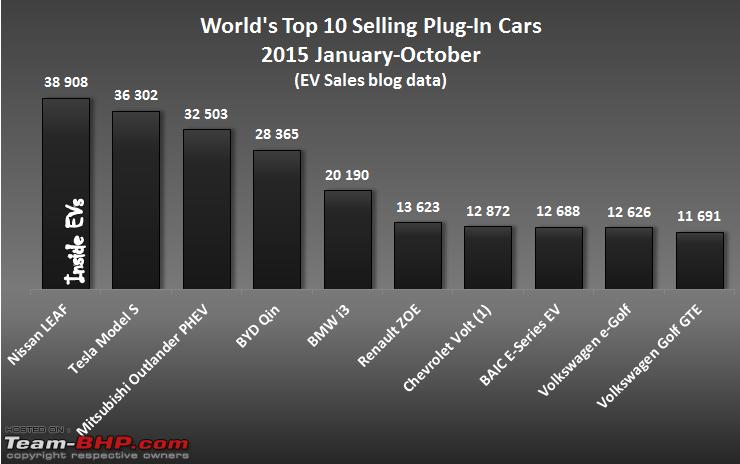 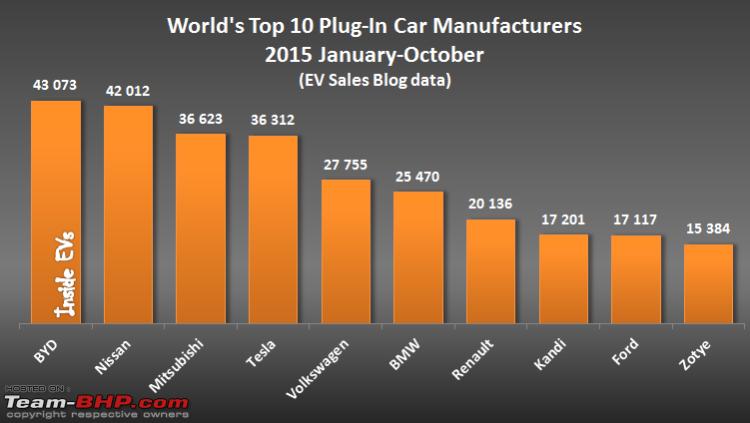
Sources: Last edited by Rajeevraj : 17th December 2015 at 20:40. |
| |  (18)
Thanks (18)
Thanks
 |
| The following 18 BHPians Thank Rajeevraj for this useful post: | AutoInt, blackwasp, Carpainter, drhoneycake, EDDY21.05, Gannu_1, GTO, hemanth.anand, InControl, jailbird_fynix, mulls, navin, NitinBatra, R2D2, SS-Traveller, theexperthand, V.Narayan, vb-saan |
| | #6 |
| Distinguished - BHPian  Join Date: Aug 2011 Location: Bangalore
Posts: 4,722
Thanked: 18,393 Times
| re: The Electric Vehicle (EV) Landscape - A Deep Dive EV Adoption and Popularity Challenges As mentioned in the second post, total EV sales are a minuscule percent of the global sales. Even with the aggressive growth in the China Market, global EV sales are expected to just cross 1 million in 2015. This is less than the monthly sales of US, China or Europe. So what are the key challenges being faced for EV Sales growth?
Before winding up, since we are talking about alternative energy sources, there is one other alternative energy vehicle being sold commercially- The Toyota Mirai
Hope this article helps provide a good insight into the Electric Vehicle Landscape. Last edited by Rajeevraj : 17th December 2015 at 20:41. |
| |  (43)
Thanks (43)
Thanks
 |
| The following 43 BHPians Thank Rajeevraj for this useful post: | Amit_breakfree, ampere, arsenal.arun, AutoInt, blackwasp, carfreak7, Carpainter, Contrapunto, dipamji, drhoneycake, EDDY21.05, Gannu_1, gearhead_mait, GTO, hemanth.anand, hrsraghav, iabhishekkumar, InControl, itsmb, Jaeger, jaibir, jailbird_fynix, jalsa777, knightrider_7, KomS_CarLog, LonelyPlanet, makk, maximus., mukul32, mulls, navin, NitinBatra, sathya.bhat, Senna4Ever, Shreyans_Jain, SS-Traveller, Stranger2106, SYSTEMIZED, theexperthand, V.Narayan, vb-saan, vinayrathore, virgopal |
| | #7 |
| Team-BHP Support  | Re: The Electric Vehicle (EV) Landscape - A Deep Dive Thread moved from the Assembly Line to the International Scene. Thanks for sharing. Learned a lot from your analysis - rating 5 stars! |
| |  (2)
Thanks (2)
Thanks
 |
| The following 2 BHPians Thank GTO for this useful post: | Chethan B G, Rajeevraj |
| | #8 |
| BHPian Join Date: Sep 2005 Location: Chennai
Posts: 177
Thanked: 155 Times
| Re: The Electric Vehicle (EV) Landscape - A Deep Dive Thanks a lot for this extensive information. Learnt a lot... I think Toyota is also planning for Corolla hybrid. |
| |  (1)
Thanks (1)
Thanks
 |
| The following BHPian Thanks vennarbank for this useful post: | Rajeevraj |
| | #9 |
| BHPian Join Date: Dec 2015 Location: Rnc, Hyd, Del
Posts: 235
Thanked: 675 Times
| Re: The Electric Vehicle (EV) Landscape - A Deep Dive Just adding my 2 cents here... There is a huge gap in acceptance of electric vehicles in India due to the problem of high prices and lack of supporting infrastructure. Mahindra Reva is prices at 6-7 lakhs which is atleast 2.5 times the price of cheapest petrol car, Tata Nano. Any first time buyer will not be interested in purchasing the Reva due to it's price and limited range. The best bet in India will be to provide heavy incentives by the government so that the cars become cheaper and can be afforded by many. Also if the prices come down, the urban Indians in search of a small city car, will be attracted towards buying an electric vehicle. Right now, one can get a Suzuki Baleno or Hyundai i20 for the price of Mahindra Reva. There's no wonder why the sales of Reva is so low. Also in the rural areas, 24 hours electricity is a dream for most part of India, so owning an electric car in the rural areas is a big 'no'. The government is working for it, but it'll take time to reach to a certain level. At the end of it, every one of us needs to become more considerate towards the nature and natural resources and think about the world at a larger scale. An old dialogue but relevant here ' 'Switching of the lights and fans when not in use in the urban area, can provide electricity to a rural home for a couple of hours'. Thanks for reading. |
| |  (1)
Thanks (1)
Thanks
 |
| The following BHPian Thanks Amit_breakfree for this useful post: | NitinBatra |
| | #10 | |
| BHPian Join Date: Dec 2015 Location: KA19/KA01
Posts: 143
Thanked: 570 Times
| Re: The Electric Vehicle (EV) Landscape - A Deep Dive Excellent report Rajeevraj. Rated a well deserved 5 star. Quote:
This becomes another company trying to have a bite of market now dominated by Tesla. There are many companies now who are developing EV for masses like Faraday Future, Atieva, NextEV, and Karma (formerly Fisker). It will interesting to see this market grow. Source  I also follow the developments of startup "Ather Energy" based in Chennai/Bangalore. They are developing electric scooter and their prototype scooter looks good as per me. They came to spotlight when they got funding from Flipkart year back I think I also follow the developments of startup "Ather Energy" based in Chennai/Bangalore. They are developing electric scooter and their prototype scooter looks good as per me. They came to spotlight when they got funding from Flipkart year back I think Ather Energy Website P.S: I am no where related to either NextEV or Ather Energy. | |
| |  (3)
Thanks (3)
Thanks
 |
| The following 3 BHPians Thank sathya.bhat for this useful post: | Rajeevraj, vagu, vinayrathore |
| | #11 | ||
| BHPian Join Date: Feb 2010 Location: Auckland, Chd
Posts: 116
Thanked: 87 Times
| Re: The Electric Vehicle (EV) Landscape - A Deep Dive Beautiful and informative article. Thanks Rajeevraj. Needless to say, that EV (in all flavors) is the most happening development in the auto industry. We sure will witness a turning point in the automotive industry - with lots of EV technology, trial and error, and ultimately maturing of some select technologies ready for mass adoption. Auto manufacturers will come out good on this aspect - no doubt. The concern will be accompanying EV infrastructure, driven by government policies. And I think we have an alliance that will help governments (trend-setters), to take those early steps. A few weeks back, I had come across the International Zero Emission Vehicle (ZEV) alliance (website). This alliance has a very ambitious plan - Quote:
Quote:
 So definitely we will be witnessing a lot of R&D in this area. This alliance should lead to mass EV infrastructure, that will eventually be endorsed by the late-adopters. So definitely we will be witnessing a lot of R&D in this area. This alliance should lead to mass EV infrastructure, that will eventually be endorsed by the late-adopters.I believe, solar power is worth exploring here too. We definitely have a lot of sunshine, to keep car batteries charged. Solar cells are expensive right now. Hopefully with time, this technology will be up for grabs too. On another note, your article mentions Regenerative braking systems. This is quite interesting. For those interested in a deep dive of how this works, do refer to How Stuff Works Last edited by KomS_CarLog : 18th December 2015 at 12:42. | ||
| |  (1)
Thanks (1)
Thanks
 |
| The following BHPian Thanks KomS_CarLog for this useful post: | Rajeevraj |
| |
| | #13 |
| BHPian Join Date: Sep 2007 Location: Noida
Posts: 264
Thanked: 156 Times
| Re: The Electric Vehicle (EV) Landscape - A Deep Dive how would the batteries be scrapped once they are beyond their useful life? governments will need to come up with procedures that dont impact the environment, else we are back to square one: damage to planet due to use of fossil fuels Vs damage caused by dumping used batteries |
| |  ()
Thanks ()
Thanks
 |
| | #14 | |
| BHPian Join Date: Apr 2006 Location: Panjim, Goa
Posts: 370
Thanked: 174 Times
| Re: The Electric Vehicle (EV) Landscape - A Deep Dive Quote:
http://www.autoblog.com/2014/02/18/u...-system-japan/ http://reneweconomy.com.au/2014/sola...go-japan-46230 | |
| |  (1)
Thanks (1)
Thanks
 |
| The following BHPian Thanks Astleviz for this useful post: | maven |
| | #15 |
| BHPian Join Date: Sep 2009 Location: Bangalore
Posts: 317
Thanked: 168 Times
| Re: The Electric Vehicle (EV) Landscape - A Deep Dive The pollution levels are there anyways. While we (aam Junta) think it very cool to use electric vehicle such as E2O, what with its massive cost, and projected savings in term of per kilometre running charges, we still need to to introspect on what fuels we use to generate electricity. Many Electricity generating stations still depend on fossil fuels like coal. Burning of coal produces pollution and this is not exactly serving the purpose of running your car on "CLEAN FUEL". The more adaptibility to Hydro Powerstations, more we save on the environment. But then there is a strong lobby by Coal mine allottees, which brings back to the original question of what defines a clean fuel? Andy |
| |  ()
Thanks ()
Thanks
 |
 |


